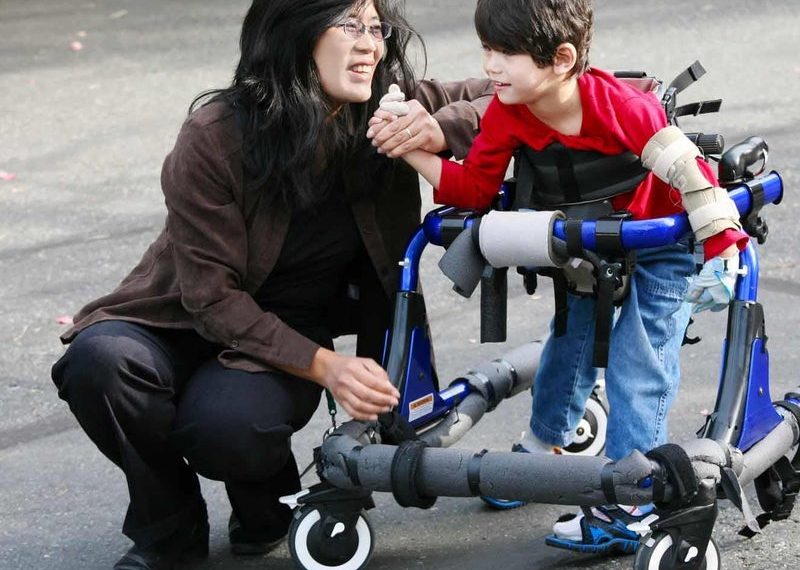Children with mobility challenges encounter daily barriers inhibiting their exploration, learning, and engagement. Pediatric walkers become indispensable aids, offering crucial support for standing and independent movement.
Let’s Learn the significance of pediatric walkers for empowering children with mobility needs. These devices facilitate upright standing and autonomous mobility, which is essential for children’s development. By addressing these challenges, pediatric walkers play a vital role in enhancing children’s quality of life and helping them with their independence.
Table of Contents
What are Pediatric Walkers?
Pediatric walkers are specialized mobility aids designed to assist children with mobility challenges in standing and walking. These devices consists of a frame with supportive handholds and sometimes wheels, providing stability and support for children who have difficulty walking independently due to physical disabilities, developmental delays, or other medical conditions.
Pediatric walkers are adjustable to accommodate children of varying heights and sizes, and they play a crucial role in promoting independence, mobility, and participation in daily activities for children with mobility impairments.
The Need for Pediatric Walkers
Pediatric walkers are essential devices for children who require support to stand and move due to various medical conditions or disabilities. These conditions may include cerebral palsy, muscular dystrophy, spina bifida, or developmental delays. With proper assistance, these children may be able to achieve crucial developmental milestones and participate fully in activities at home, school, and in their communities.
A pediatric walker provides stability and support, enabling children to stand upright and engage in activities that promote physical, cognitive, and social development. By offering a secure platform for standing and mobility, these devices enhance independence and foster confidence in children with mobility challenges.
Introducing the R82 Meerkat Standing Frame
Among the available pediatric walkers, the R82 Meerkat standing frame is a superior choice due to its innovative design and versatile features. Let’s have a look at R82 Meerkat’s characteristics:-
Upright Standing
The primary function of the Meerkat standing frame is to enable children to stand upright comfortably and securely. Its unique design allows the center column to be positioned either in front of or behind the child, providing flexibility and customization for optimal positioning and user comfort.
Modular Design
The Meerkat features modular components that can be easily adjusted or removed, allowing for customization to meet the changing needs of individual children. This adaptability is crucial as children grow and their mobility requirements evolve. Whether accommodating a single child’s needs over time or serving multiple users with diverse requirements, the Meerkat’s modular design ensures versatility and long-term usability.
Support for Learning Through Movement
It is designed specifically to support children’s learning through movement. The Meerkat provides a secure platform for standing, enabling children to explore and engage with their environment. The ability to stand upright is fundamental for various developmental activities, and the Meerkat facilitates these experiences, promoting growth and learning through movement.
Rocker Attachment
One of the Meerkat’s standout features is the option to attach a rocker beneath the base plate. This rocker allows for controlled movement, which is invaluable for stability training. Through gentle rocking motions, children can develop balance, coordination, and strength, further enhancing their mobility skills and physical development.
Critical Considerations for Pediatric Walker Selection
Choosing the right pediatric walker for a child involves thoughtful consideration of their unique needs, abilities, and intended usage. Here are some key factors to bear in mind:-
Consultation with Healthcare Professionals
Begin by consulting with healthcare experts, such as physical or occupational therapists. They can assess the child’s requirements, evaluate their physical capabilities, and offer recommendations tailored to their needs.
Age, Size, and Weight
One should consider the child’s age, height, weight, and potential for growth. Opt for a walker that can accommodate their current dimensions and can be adjusted as they develop.
Stability and Safety
Prioritize walkers with stable support and safety features like non-slip handles, wheel locks, and robust construction. Assess the base’s stability and the quality of the wheels to ensure safe usage.
Environment of Use
Consider where the walker will primarily be used—indoors, outdoors, or both. Select a walker with appropriate wheel size and tread pattern suited to the surfaces the child will encounter.
Portability and Storage
Evaluate the walker’s portability and storage convenience, especially if it will be frequently moved or used in various locations. Look for features like foldable or collapsible frames for easy transportation and storage.
Conclusion
Pediatric walkers are invaluable tools for children with mobility challenges. They provide essential support and assistance for standing and walking.
The R82 Meerkat standing frame stands out for its versatility, functionality, and support. Its upright standing capability, modular design, and optional rocker attachment make it a comprehensive solution for empowering children to stand, move, and explore their environment with confidence.
If you are thinking of buying an R82 Meerkat in Dubai, you should only choose medical equipment from BMS. They provide innovation-driven solutions tailored to challenge norms, prioritize safety, and deliver unparalleled customer care.

